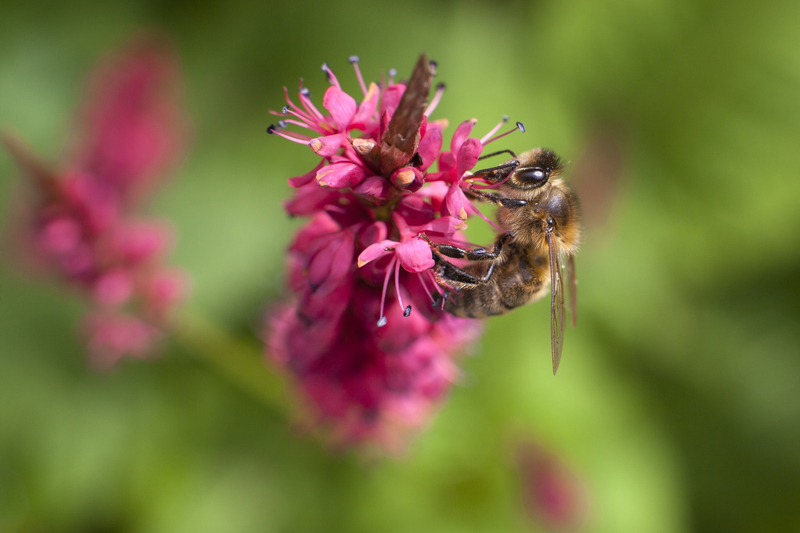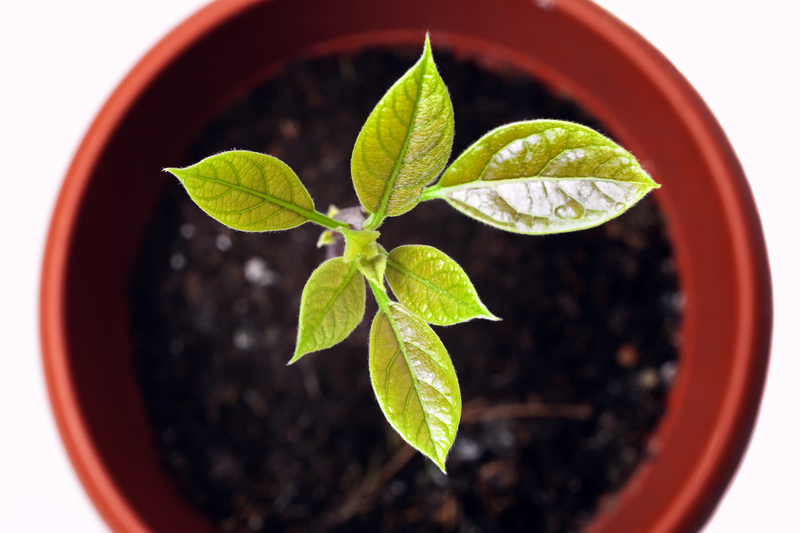Step-by-Step Guide to Nurturing Beautiful Orchids
Posted on 01/07/2025
Step-by-Step Guide to Nurturing Beautiful Orchids
Orchid care can feel intimidating, but with the right techniques, anyone can nurture healthy, spectacular orchids that thrive year after year. In this comprehensive, SEO-optimized guide to cultivating beautiful orchids, we'll walk you step-by-step through everything you need to know--whether you're a novice grower or a seasoned enthusiast searching for expert orchid tips. Discover secrets for growing, maintaining, and reviving orchids of every variety!

Why Orchids Captivate Gardeners
Orchids are considered symbols of beauty and refinement, cherished worldwide for their exquisite blossoms and exotic allure. Boasting over 25,000 species and more than 100,000 hybrids, orchids--such as Phalaenopsis, Dendrobium, and Cattleya--come in dazzling shapes, colors, and sizes. Their rarity and mystique make growing orchids one of the most rewarding horticultural pursuits.
What Makes Orchids Unique?
- Unmatched Diversity: A family richer in species than any other plant group.
- Exotic Blooms: Intricate, long-lasting flowers often vibrant in color.
- Air-Purifying Qualities: Orchids help clean indoor air and boost mood.
- Remarkable Adaptability: Thrive in rainforests, mountains, or even deserts.
Step 1: Choosing the Right Orchid
To nurture beautiful orchids, start with a species or hybrid suited for your indoor environment and comfort level. Some species are easier than others, especially for beginners.
- Phalaenopsis (Moth Orchids): Best for beginners! Tolerant and blooms for months.
- Dendrobium: Incredible variety, moderate care required.
- Cattleya: Famous for large, fragrant flowers; needs ample light.
- Paphiopedilum (Lady's Slipper): Easy care, unique slipper-shaped flowers.
- Oncidium (Dancing Lady): Floriferous and fast growers with bright blooms.
Where to Buy Healthy Orchids
You can find orchids at garden centers, orchid societies, or online specialists. Choose orchids with:
- Firm, green leaves free of spots
- Plump, undamaged roots
- Some unopened buds for longer bloom time
Step 2: Perfecting Orchid Placement and Lighting
Orchids need the right amount of sunlight to thrive and bloom beautifully. Most prefer bright, indirect light, but each species has its preferences.
Light Requirements for Popular Orchid Types
- Phalaenopsis: Moderate, indirect light--east- or west-facing windows are ideal.
- Cattleya: Brighter filtered light--south-facing or shaded patio works best.
- Dendrobium: Can tolerate more light, but avoid direct midday sun.
Tip: Leaves that are deep green need more light, while yellowish leaves usually mean too much light!
Step 3: Mastering Orchid Watering Techniques
Watering orchids is their trickiest aspect. They hate "wet feet," but shouldn't completely dry out either. The key? Water just before the mix dries, but never let roots sit in water.
Essential Orchid Watering Guidelines
- Check Moisture: Insert your finger or a wooden skewer; if it feels dry, it's time to water.
- Water Thoroughly: Let room-temperature water flow through the pot, drenching the medium and roots.
- Drain: Always remove excess water--never let the pot sit in a tray of water.
- Frequency: Usually every 7-10 days for Phalaenopsis; adjust for humidity, temperature, and pot size.
Additional Tip: Use rainwater or distilled water--tap water with high salts or chlorine can harm orchids.
Step 4: Potting Mix & Repotting for Optimal Orchid Growth
Orchids aren't grown in soil. Instead, they thrive in special orchid potting media that provides air to their roots.
Popular Orchid Potting Mixes
- Bark Mix: Most common--fir or pine bark, often with perlite or charcoal
- Sphagnum Moss: Holds more moisture, ideal for young orchids or those in dry climates
- Leca Pellets, Coconut Husk, Charcoal, or Combinations: Used for specific needs or advanced growers
How and When to Repot Orchids
- When Roots Outgrow Pot: Or the medium has broken down (every 1-2 years)
- After Flowering: Best time to repot is immediately after a bloom cycle
- Steps:
- Gently remove the orchid, untangle roots, and snip away any dead, mushy roots with sterilized scissors
- Rinse roots and inspect for pests or rot
- Place orchid in clean pot with fresh orchid mix, spreading roots out
- Water lightly and let settle before resuming normal care
Step 5: Fertilizing Orchids for Lush, Vibrant Blooms
Feeding is crucial for stunning, long-lasting orchid blossoms. Orchids are light feeders but benefit from a balanced, diluted fertilizer.
How to Fertilize Orchids
- Use a balanced orchid fertilizer (20-20-20 or similar) or one for blooming plants
- Dilute fertilizer to half or quarter strength (too much will damage roots)
- Apply every 2-4 weeks during the growing season, less in winter when dormant
- Flush the pot with clear water monthly to avoid salt build-up
Remember: It's better to under-fertilize than overdo it! Orchids can recover from a little hunger but not from burned roots.
Step 6: Orchid Temperature & Humidity Management
Orchids thrive in stable environments. Too much fluctuation in temperature or humidity can stress your plants and hinder flowering.
Optimal Conditions for Common Orchids
- Temperature: 65-85?F (18-29?C) during the day, slightly cooler at night
- Humidity: 40%-70% is best; group plants together, use pebble trays, or a humidifier if needed
- Air Circulation: Gentle airflow is essential. Open windows seasonally or use fans to prevent mold and rot.
Pro Tip: Some orchids, like Phalaenopsis, persuade blooming when exposed to slightly cooler nights for a few weeks.
Step 7: Daily & Weekly Orchid Care Routines
Regular attention makes nurturing gorgeous orchids easier and more enjoyable. Establish a care routine to monitor watering, fertilizing, and plant health each week.
Your Weekly Orchid Checklist
- Inspect Plants: Check for signs of pests, spots, or wilting leaves
- Water: Only when the orchid mix is nearly dry
- Fertilize: Stick to your schedule--avoid overfeeding
- Clean Leaves: Wipe down with damp cloth to remove dust and prevent pests
- Rotate Pots: Encourage even growth by turning the plants every few weeks
Consistency is key to thriving, beautiful orchids!
Step 8: Identifying & Solving Orchid Problems Quickly
Even with the best care, orchids can develop issues. Early detection and gentle intervention help you avoid permanent damage and lost blooms.
Common Orchid Problems & Remedies
- Yellowing Leaves: Usually overwatering or too much sun. Adjust watering schedule, move to gentler light.
- Root Rot: Sign of waterlogged soil. Repot and remove damaged roots ASAP.
- Pests (scale, mealybugs, spider mites): Treat with insecticidal soap, neem oil, or by physically removing pests.
- No Blooms: Needs more light or a boost from fertilizer; temperature changes may help trigger spikes.
- Leaf Spots or Mold: Improve air circulation and avoid water on leaves.
Monitor orchids weekly to catch early warning signs and maintain their health and vibrancy.
Step 9: Encouraging Reblooming for Continual Orchid Beauty
After the excitement of your orchid's first bloom, the goal is to encourage reblooming for repeated floral shows year after year.
How to Get Orchids to Re-Bloom
- Provide a Rest Period: After blooming, some orchids need less water and fertilizer for a few weeks.
- Temperature Fluctuation: Cooler night temps (10?F / 6?C drop) encourage new flower spikes.
- Keep Up with Care: Maintain good water, light, and feeding habits year-round.
- Trim the Spike Carefully: For Phalaenopsis, you can cut above a node to prompt a secondary spike, or trim at the base to let the plant rest completely.
Patience and proper care will be rewarded with another round of stunning orchid blooms!
Step 10: Advanced Care--Orchid Propagation & Hybrids
Once you've mastered basic orchid care, you may want to explore propagation or even hybridization for your own unique orchids.
Basic Orchid Propagation Methods
- Division: Common for sympodial orchids (Cattleya, Dendrobium). Separate mature clumps, repot, and nurture each as a new plant.
- Keiki Growth: Some orchids (Phalaenopsis, Dendrobium) produce baby plants on their spikes--wait until roots are 2-3 inches, then carefully detach and pot.
- Seed Propagation: For experts only! Orchid seeds require sterile lab conditions.
Creating Orchid Hybrids
Enthusiasts sometimes cross-pollinate orchids to create dazzling new hybrids. This advanced technique is a long-term project, but with patience, you may discover a one-of-a-kind cultivar!

Frequently Asked Questions About Orchid Care
How can I make my orchid flower again?
Increase light, use a high-phosphorus fertilizer, and provide a few weeks of cooler nighttime temperatures. Don't overwater during the rest period!
What is the best potting media for orchids?
Bark-based mixes work for most. Adjust with moss or other materials based on your home's humidity and the type of orchid.
Should I cut the flower spike on my orchid after blooms drop?
For Phalaenopsis, trim just above a node to encourage a second flowering. For other types, cut at the base after flowering to allow rest and healthy regrowth.
How do I tell if I've overwatered my orchid?
Wilting, yellow leaves and mushy roots are signs. Repot and let the plant dry out before resuming careful, less frequent watering.
Conclusion: Enjoy Your Beautiful Orchids All Year Round
With care, patience, and a little curiosity, nurturing beautiful orchids is within everyone's reach. Remember to choose the right species, maintain optimal light and humidity, master watering, and troubleshoot problems early. Turn orchid growing into an exciting, ongoing journey--before you know it, you'll be rewarded with breathtaking blooms and newfound confidence as a gardener.
Ready to get started? Visit your local nursery, choose your dream orchid, and let these ten steps guide you to growing the most beautiful orchids your home has ever seen!
```
